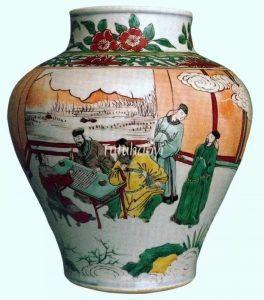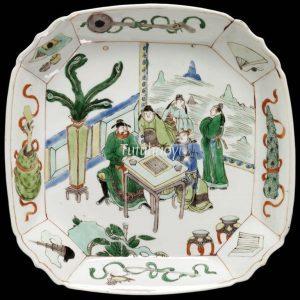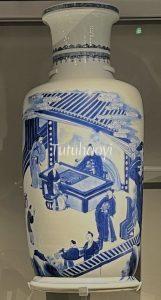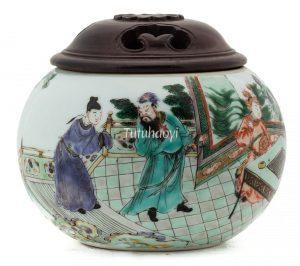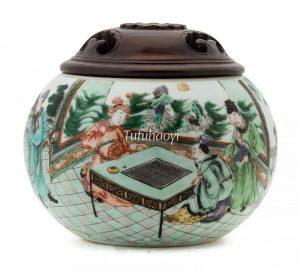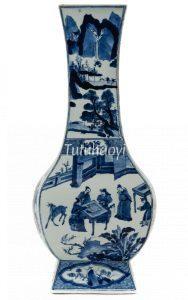A single chess play that claims victory
棋决雌雄
© Tutuhaoyi.com owns the copyright of the description content for the images attached. Quoting all or part of the description content on this page is permitted ONLY IF ‘Tutuhaoyi.com’ is clearly acknowledged anywhere your quote is produced unless stated otherwise. (本页描述内容版权归Tutuhaoyi.com所有,转发或引用需注明 “Tutuhaoyi.com”, 侵权必究, 已注开源信息的条目除外。)
The Tale of the Curly-Bearded Fellow (Qiu Ran Ke Zhuan 虬髯客传) by Tang dynasty writer Du Guangting 杜光庭 recounts a vivid episode from the youth of Emperor Taizong, Li Shimin 李世民 (598–649). Set during the final years of the Sui dynasty—when warlords rose across a fractured empire—the story reflects the people’s longing for a leader who could restore peace and unify the realm.
Amidst this turmoil, a bold, rugged figure known as the Curly-Bearded Fellow (虬髯客) befriends Li Jing 李靖 and his wife, both of whom would later help establish the Tang dynasty. Upon hearing of the exceptional talent and charisma of Li Shimin, the Curly-Bearded Fellow expresses admiration and asks for an introduction. At the time, Li Shimin and Liu Wenjing, the magistrate of Jinyang, were secretly planning to overthrow the Sui regime. To avoid arousing suspicion, they often met under the pretext of playing weiqi (Chinese chess) at Liu’s residence.
Facilitated by Li Jing, Li Shimin meets the Curly-Bearded Fellow, and the two engage in a chess match charged with symbolic meaning. The guest boldly places four stones at the corners of the board and declares, ‘I claim all four directions!’—a metaphor for seizing control of the empire. Li Shimin, composed and strategic, places a single stone at the centre, calmly stating, ‘With one move, I secure the empire.’ His approach quickly dominates the board, prompting the Curly-Bearded Fellow to concede, recognising Li Shimin’s superiority and surrendering his own ambitions for the throne.
This scene—where a game of weiqi becomes a metaphor for political fate—was later adapted in the Ming dynasty by playwright Zhang Fengyi 张凤翼 into the historical drama The Story of the Girl Holding a Red Fly Whisk (Hongfu Ji 红拂记), which also drew on Poems of Origin (Benshi Shi 本事诗) by Meng Qi 孟棨.
Acknowledgement: The story scene depicted on the porcelain ware displayed in this listing was first deciphered by Dr Yibin Ni.
Other stories scenes from The Story of the Girl Holding a Red Fly Whisk:
When Red Fly Whisk Fell Head over Heels for the Scholar 张娘心许
Fig 1: porcelain jar with wucai overglaze enamelled decoration, Shunzhi period (1644–61), Qing dynasty, courtesy of Sir Michael Butlter collection
Fig 2: gilded porcelain dish with overglaze enamelled decoration, Kangxi period (1662–1722), Qing dynasty, courtesy of the Victoria & Albert Museum, London, Accession number: C.1334-1910
Fig 3: porcelain vase with underglaze blue decoration, Kangxi period (1662–1722), Qing dynasty, courtesy of The Burrell Collection, Glasgow, the UK; photograph by Robert Bradlow
Fig 4-5: famille verte weiqi box, Kangxi period (1662–1722), Qing dynasty, courtesy of Sotheby’s Auction House, New York, 19 March, 2019, Lot 320
Fig 6: baluster vase with underglaze blue decoration, Kangxi period (1662–1722), Qing dynasty, courtesy of Jie Rui Tang collection
